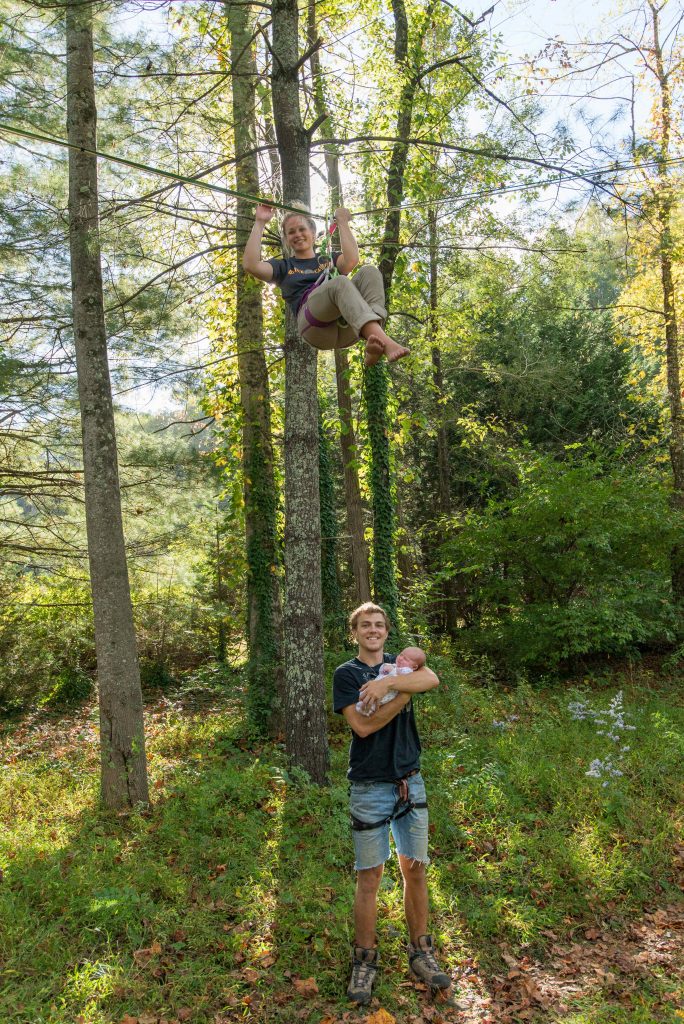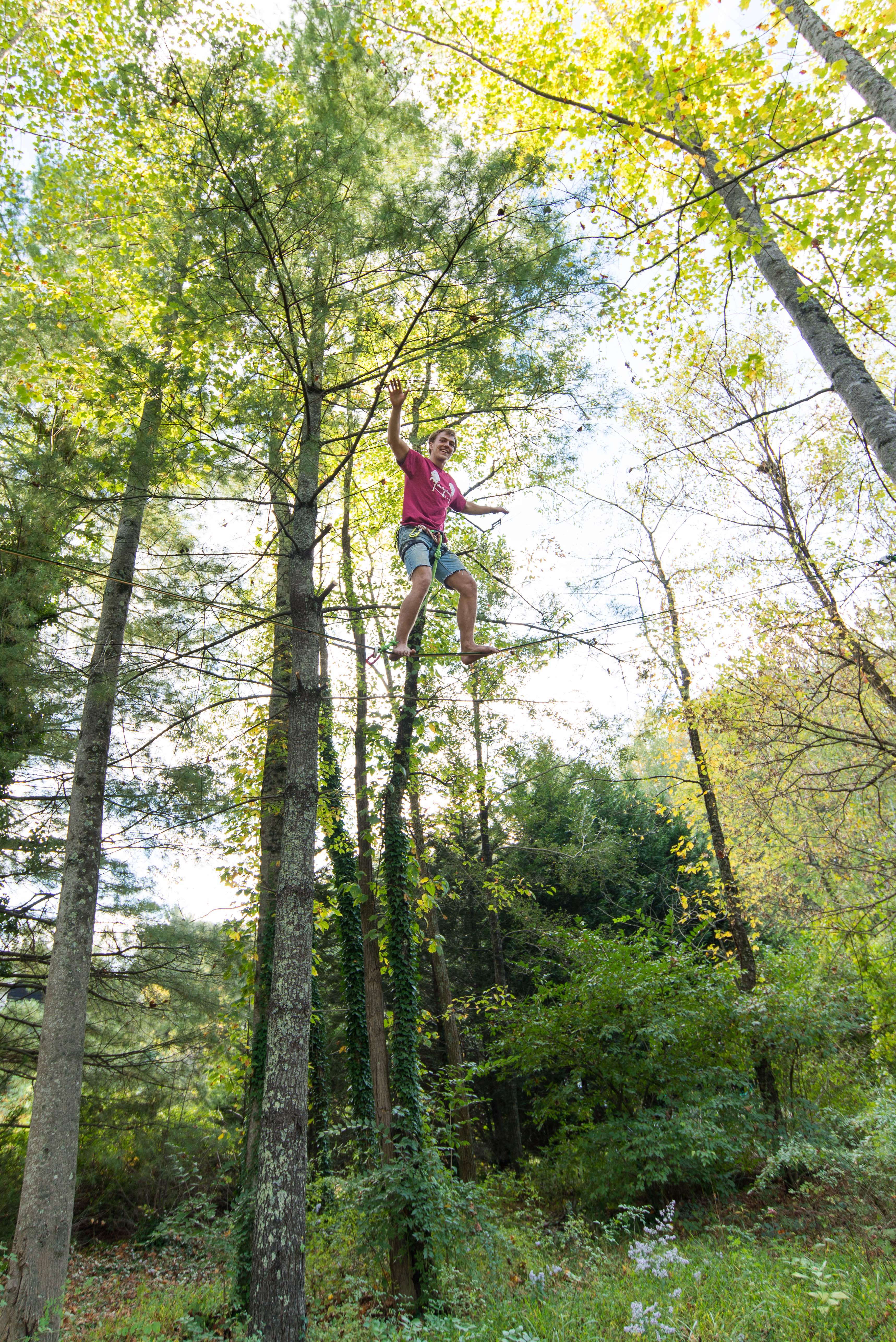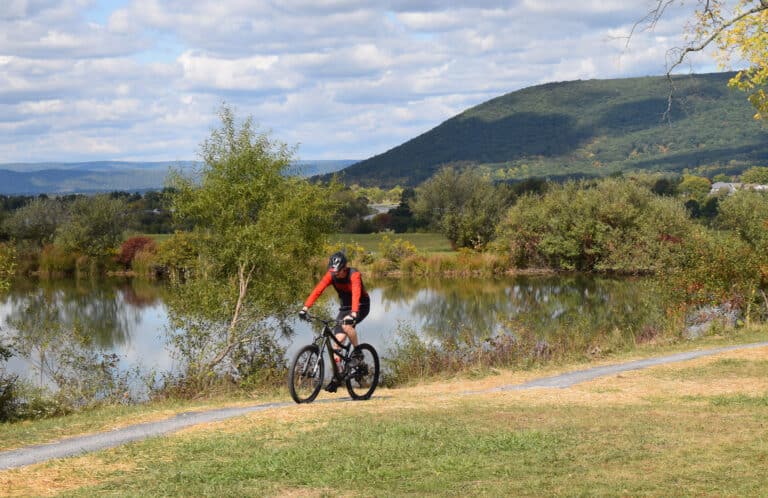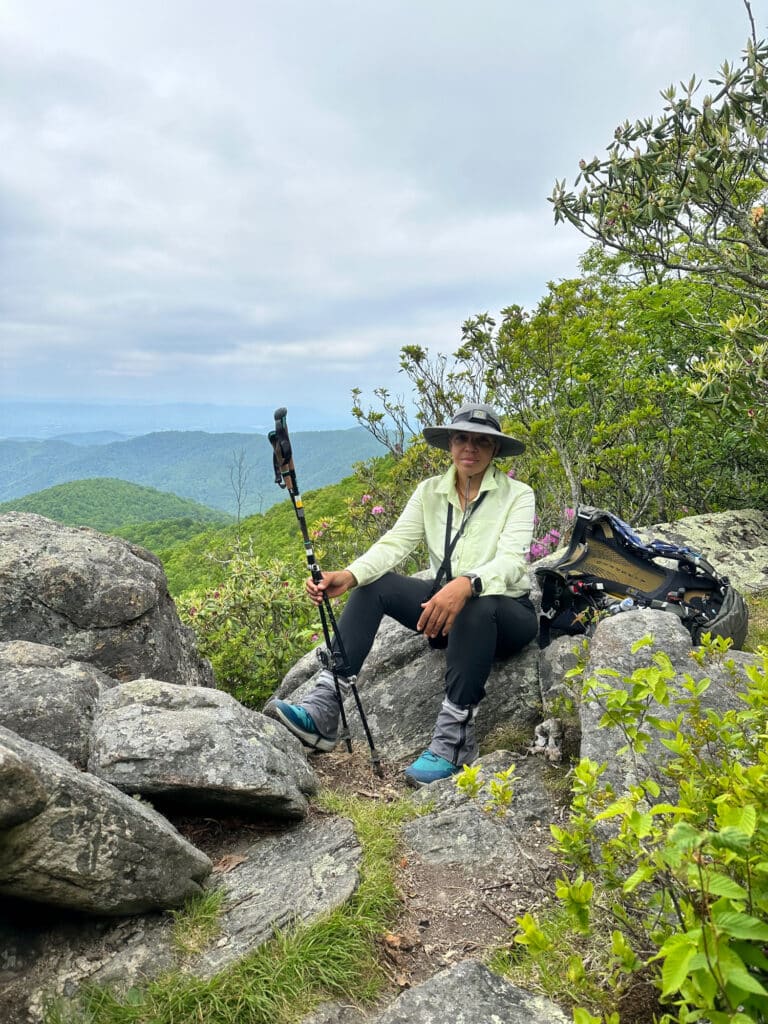“It’s a really intense feeling to only have one inch of nylon webbing between you and hundreds of feet. You can feel the exposure, all the empty air that surrounds you, and t’s like no other experience.”
Asheville, NC native, Shane Keeran, eats, sleeps and breaths, slacklining–an outdoor sport that involves balancing on a one to 2-inch nylon webbing that is tensioned between two objects. And while the word “sport” typically bears physical requirements, Keeran contends that slacklining is as much of a mental test as it is a physical one.
“You have loads of adrenaline, so it’s an unbelievable mental challenge to stay calm,” said Keeran as he spoke to remaining mindful on the slackline. “I’m a super hyper person, so I’ve never been able to meditate very well. But slacklining really changed that for me.”
While the practice of meditation is typically considered an activity that is done while sitting, Keeran uses mindfulness on the slackline by setting an intention, or purpose. By becoming aware of every movement and sensation, Keeran explained that he finds clarity and is more mindful of his body and his surroundings.
“When I step on the slackline all I have to do is focus on what I am doing in that moment. I don’t have to worry about anything but staying on that line,” Keeran said.

As a recent graduate from the University of North Carolina at Asheville, Keeran has had to adjust to life outside of college, including one very exciting change. In September 2017, him and his partner, Mary, welcomed their baby girl, Juniper, to the world. Keeran also works a few part-time jobs to keep his hyperactive mind and energetic personality busy. While occasionally he works construction, Keeran can often be be found teaching group fitness classes and boxing classes at Underground Fitness, a gym located in Asheville, NC, that offers high intensity interval and strength training. Additionally, Keeran works as a slackline instructor for WNC-based company, Slack-Librium.
As an instructor he teaches slacklining events at schools, cultural events, festivals and camps across the country. This community-oriented company combines mindfulness and slacklining to teach people of all ages about the connection between mental and physical health, aiming to create lasting change in the way we interact with one another. While coaching participants, Keeran tells them to focus on where their head is in relation to the slackline and their body, teaching them about proprioception. He is also constantly reminding participants to keep a continuous, slow and steady breath so that they are able to use all of their senses to stay balanced on the line.
“Slacklining has taught me a lot about the importance of balance training. It works a lot of your core muscles as well as all the postural muscles in your back and all of your stabilizer muscles,” Keeran said.
To slackline, all you need is the slackline itself, a large open space, two stable points to rig the line a few feet off the ground and the willingness to trust yourself and take a fall. Typically, slacklines are rigged between two trees, but it is also possible to rig a slackline by drilling two anchors into a boulder. That being said, it is important to have a thorough knowledge of rigging because the tension created by a slackline is much more than the eye can see.
“Slacklines can generate an upwards of 1,000 to 2,000 pounds of lateral pressure, so I’ve learned to have a lot of respect for trees,” said Keeran. “They’re able to hold up these long lines that we tension and take falls on and it’s truly amazing.”
In addition to simply walking on a slackline, there are also many tricks that can be learned. Sitting, jumping, surfing and doing flips are just a few of the tricks that can be mastered once you become confident with walking on the slackline. The use of a slackline to do tricks is also known as tricklining.
Another form of slackinling is called highlining. Like the name suggests, this type of slacklining is a little more high risk and requires practice on the slackline and training in the gym to prepare for the physical and mental challenges that come with balancing on a line that is rigged a couple hundred feet up in the air.
“I spend about 99 percent of my time slacklining,” said Keeran. “That other one percent is highlining.”
Practicing on the slackline is important so that you can put your balance skills to the test while out on a highline. Keeran also explained that going to the gym a few times a week helps to build up strength that is necessary when pulling yourself back up to the line after a fall.
“The first time I went highlining was with my partner Mary. I basically shimmied out on the line, was able to stand up and then immediately bailed,” said Keeran. “After I got my first fall out of the way I felt so much better. I’ve been hooked on highlining ever since.”
Whereas a slackline is commonly rigged between two trees, a highline is anchored into the boulders of a step canyon or valley. While this brings a whole new level of risk to the table, most highliners wear a safety harness known as a leash to catch them when they fall. Keeran explained that rigging a leash is the most important thing when it comes to highlining.
“When you go to rig a highline, understanding the mechanics of it is everything,” Keeran said.
While the technical process of rigging a highline takes a certain finesse, finding the right spot can be just as much of a challenge. Although it may seem like it takes an adrenaline junky that never says no to a dare to try any type of slacklining, Keeran insists that it is possible for anyone with an open mind. Just months before getting his first slackline, he says that he never thought he would be able to do what he can do now. A couple years after joining the slacklining community, he has not only allowed been able explore this form of meditation in motion, he has befriended countless people who share his affinity for the mind-body connection as well as a love for the great outdoors.








